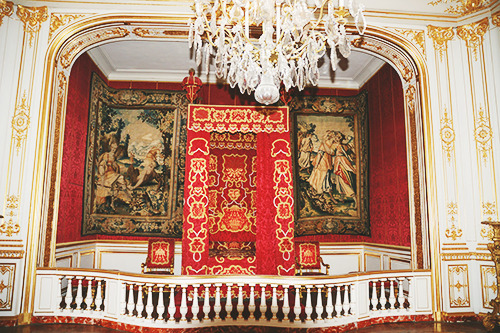princely estates: château de chambord“Neither Gothic nor Modern,” wrote the architect An
princely estates: château de chambord“Neither Gothic nor Modern,” wrote the architect André Félibien more than a century and a half after the Château de Chambord was built. “One may [nevertheless] consider it one of the most magnificent constructions that the kings of France have built up to now. ” (Pérouse de Montclos 1997, 255). Not merely magnificent, Chambord is a key monument in the transition of French architecture from Medieval to Renaissance, one of the first French buildings in France to show Italian influence. That influence, however, is largely limited the the imposition of symmetry on a plan derived from the Medieval castle. Ornament, through derived from Italian Renaissance examples, was executed by local craftsman either unfamiliar with with authentic Renaissance ornament or unwilling to copy it and is neither Medieval nor quite authentically Italian Renaissance. Part of Chambord’s interest may be due to it’s transitional style, but it also fascinating because it is —still— one of the largest, most splendid castles in France, a rectangle 510 by 385 feet (one and a half times the size of a typical American city block). Finally, it is of interest because of the spectacular double-spiral central staircase that most scholars now agree was designed by Leonardo da Vinci, whom King François I brought to the Loire Valley. Da Vinci may have consulted on the plan.— Hanser; Architecture of France, pp. 47 (images) -- source link
Tumblr Blog : mistresseswholunch.tumblr.com
#architecture#estates#chambord

